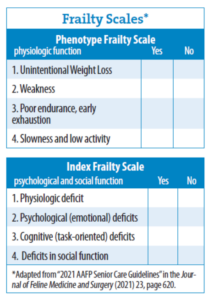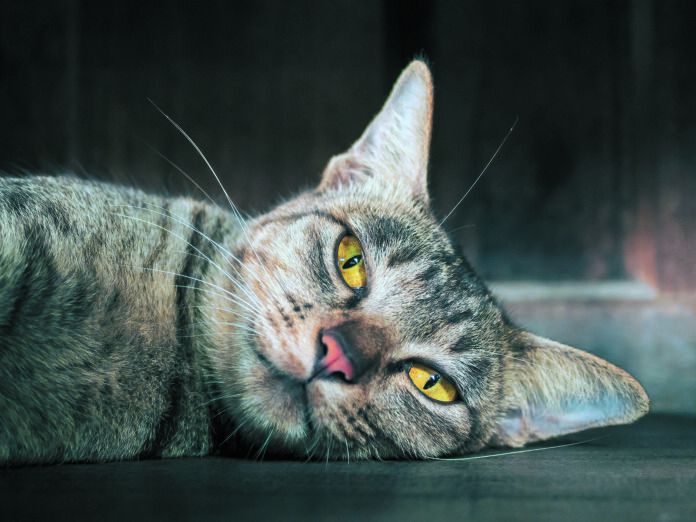Frailty is a syndrome, according to the American Academy of Feline Practitioners (AAFP). It means a cat has a diminished functional reserve that leads to both physiologic and cognitive declines and thus a greater risk for adverse medical outcomes. Age in itself is not a risk factor for frailty, the association says, but it does become more common as cats grow older.
The sooner it can be determined whether a cat is frail or becoming frail, the sooner steps can be taken in your home to account for the problem and keep up her quality of life. Steps can also be taken at the doctor’s office to try to find a cause for the frailty and see if it can
be addressed.
In your home, a frail cat might need night lights for better visibility in darker areas, while ramps and steps might ease access to favorite places. A frail cat might also need more litterboxes, food and water bowls, and hiding spaces to deal with both the physical limitations of frailty and the forgetfulness that sometimes characterizes the syndrome.
A veterinarian can work to determine whether frailty has resulted from degenerative joint disease, cognitive decline, or some other problem — and then use the tools in her medical arsenal to see if she can slow the progress of the problem that’s making the cat more vulnerable. The dual approach — steps to take at home and at the doctor’s office — are designed to keep a cat active, self-sufficient, and content for as long as possible.
 But how do you and the doctor codify frailty rather than just think you’re noticing it?
But how do you and the doctor codify frailty rather than just think you’re noticing it?
Two frailty scales
The AAFP has devised two frailty scales. One, the Phenotype Frailty Scale, looks at the possibility of physiologic decline. It was adapted from research conducted by scientists at the Johns Hopkins Medical Institutions’ Center on Aging and Health. The other, adapted from research conducted by investigators at Montreal’s Ecole Polytechnique, looks at psychological and social function to help identify cognitive decline. Together, the two scales can yield important information about whether frailty is creeping in or is already present and whether adjustments are in order both at home and during veterinary visits. Fill out the scales for your own cat and see how things look.




